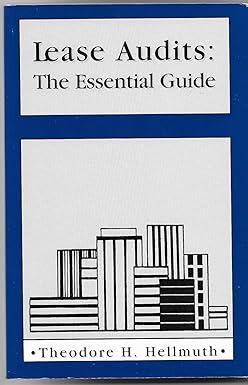Question
The project team would like to determine how many victims each hospital might expect in a disaster, and how long it would take to transport
The project team would like to determine how many victims each hospital might expect in a disaster, and how long it would take to transport victims to the hospitals. However, because of lack of historical data on disasters in the area, the project team have decided to assume that the total number of victims is best approximated by a triangular probability distribution with a minimum and a maximum of respectively 20 and 300 victims, and with a peak of 80 victims.
The emergency facilities and capabilities at the five hospitals vary. The following table describes how victims will be distributed to the hospitals in the event of a disaster situation:
|
| |
| Beth Israel Medical | 30% |
| Tufts Medical | 15% |
| Massachusetts General | 20% |
| Boston Medical | 25% |
| Brigham and Womens | 10% |
The proximity of the hospitals to the university campus also varies. It is estimated that the transport times to each of the hospitals is exponentially distributed with a certain average that depends on that hospital. The following table indicates the average of the transport time for each hospital.
|
| |
| Beth Israel Medical | 7 |
| Tufts Medical | 10 |
| Massachusetts General | 15 |
| Boston Medical | 15 |
| Brigham and Womens | 20 |
For simplicity, we may assume that each hospital has two emergency vehicles, so that one leaves the university campus when the other one leaves the hospital. This means that one emergency vehicle arrives at the campus when the other arrives at the hospital. Therefore, the total transport time for each hospital will be the sum of transporting each victim to that hospital.
-
Perform a simulation analysis consisting of 5,000 simulations to determine:
-
(i) Average number of victims that can be expected at each hospital.
-
(ii) For each hospital, the average total time (in hours) needed to transport all victims.
-
(iii) For part (i) above, create a chart the displays the Law of Large Numbers in action for the
Beth Israel Medical. (Law of large numbers: As the number of trials becomes larger, the
observed averages approach to the theoretical average.)
-
(iv) For the Beth Israel Medical hospital, perform an exploratory data analysis of the total
transport time by:
-
a) Calculating a 95% confidence interval for the total transport time,
-
b) Determining a probability distribution that best fits the total transport time (in
hours).
-
c) Support your assertion in part (b) by creating a frequency distribution and
performing a Chi-squared Goodness of fit test.
-
-
(v) Let denote the average transport time (in minutes) per victim for the entire process of
transporting all victims. Perform an exploratory data analysis of .
-
Step by Step Solution
There are 3 Steps involved in it
Step: 1

Get Instant Access to Expert-Tailored Solutions
See step-by-step solutions with expert insights and AI powered tools for academic success
Step: 2

Step: 3

Ace Your Homework with AI
Get the answers you need in no time with our AI-driven, step-by-step assistance
Get Started


